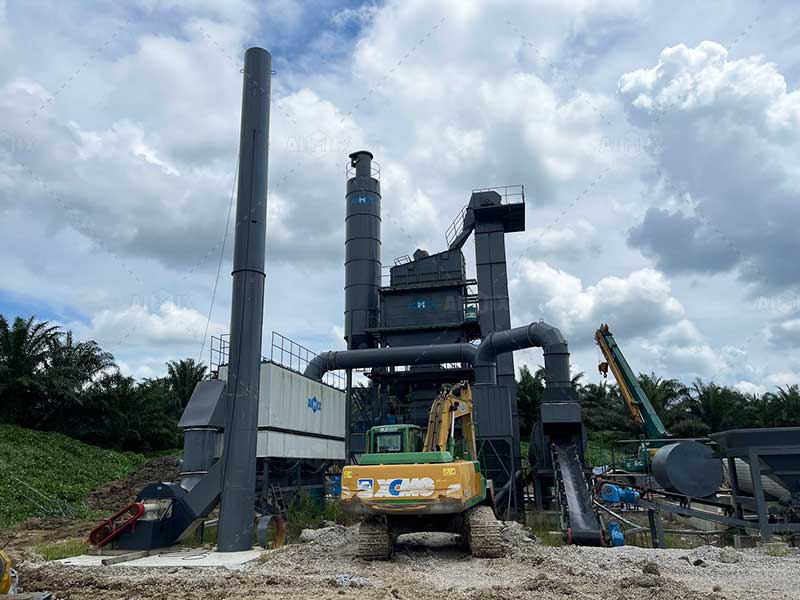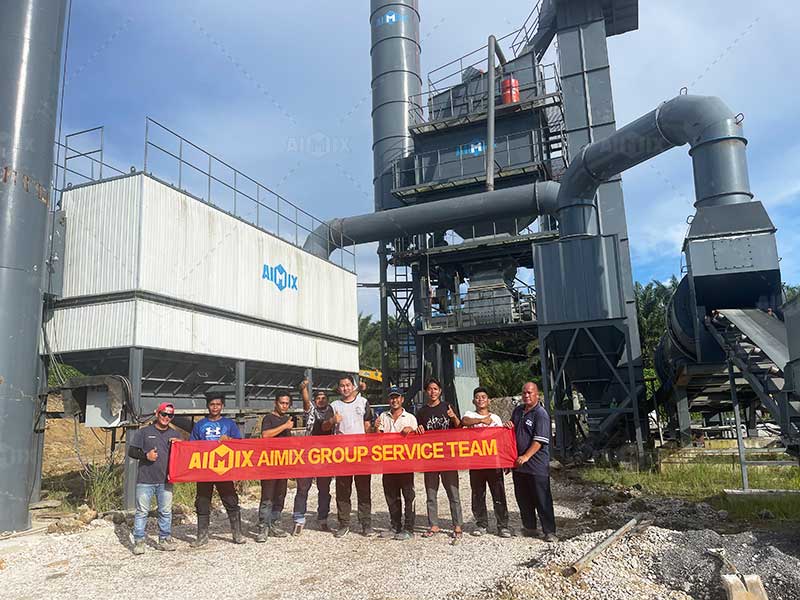An asphalt plant, often referred to as a hot mix plant or asphalt mixing plant, stands as a pivotal apparatus in the preparation of asphalt concrete, a material extensively utilized for surfacing roads, parking lots, highways, airport expressways, and other heavily trafficked surfaces.
The Inner Workings Unveiled
Though diverse variations of asphalt plants exist, they all share fundamental components in common. These include the coal feeder, coal burner, filler supply system, cold aggregate supply system, vibrating system, weighing and mixing system, dust collector, hot aggregate elevation system, bitumen supply system, and, in certain asphalt batch mix plant configurations, a drum dryer. Each of these components plays a specialized role in the intricate orchestration of asphalt concrete production tailored for paving purposes.

Variety in Asphalt Mixing
The requirements for asphalt concrete vary depending on the specific project. Consequently, asphalt plants can be customized to accommodate different types and coarseness levels of asphalt concrete. Essentially, a hot mix asphalt plant heats a blend of aggregates, sand, and a filler, such as sand dust. Following this, a binder, typically bitumen, is introduced to the mixture, facilitating the formation of asphalt concrete.
The Asphalt Plant Spectrum
Asphalt mixing plants can be broadly categorized into three primary groups:
Production Capacity-Based Classification:
This classification revolves around the hourly production capacity of the plant, encompassing three subtypes:
- Mini asphalt plants, characterized by modest production capacities.
- Medium asphalt plants, offering intermediate production capacities.
- Large asphalt plants, boasting substantial hourly production capabilities.

Mobility-Based Classification:
This classification hinges on the plant’s mobility within a construction area, encompassing three types:
- Mobile plants, capable of effortless relocation across diverse construction sites. Learn more about mobile asphalt plants here: https://aimixasphaltplant.com/mobile-asphalt-mixing-plant/.
- Semi-stationary plants, typically transported on multiple trailers and assembled on-site.
- Stationary plants, fixed at a specific location for operations.
Mixing Method-Based Classification:
Based on the mixing methodology employed, two primary categories emerge:
- Batch mix plants, designed for precision batching of small asphalt batches until the project’s total tonnage is met.
- Drum mix plants, engineered to continuously produce the required tonnage for a construction endeavor.
Beyond these fundamental classifications, asphalt plants can also be categorized based on their environmental features, encompassing noise reduction mechanisms and advanced carbon filtration systems. Moreover, certain plants are distinguished by their resource recycling capabilities. For instance, some asphalt plants for sale can recycle old asphalt, curbing environmental degradation. Others have the ability to repurpose gases generated during the asphalt mix manufacturing process, thereby curbing carbon emissions into the atmosphere.